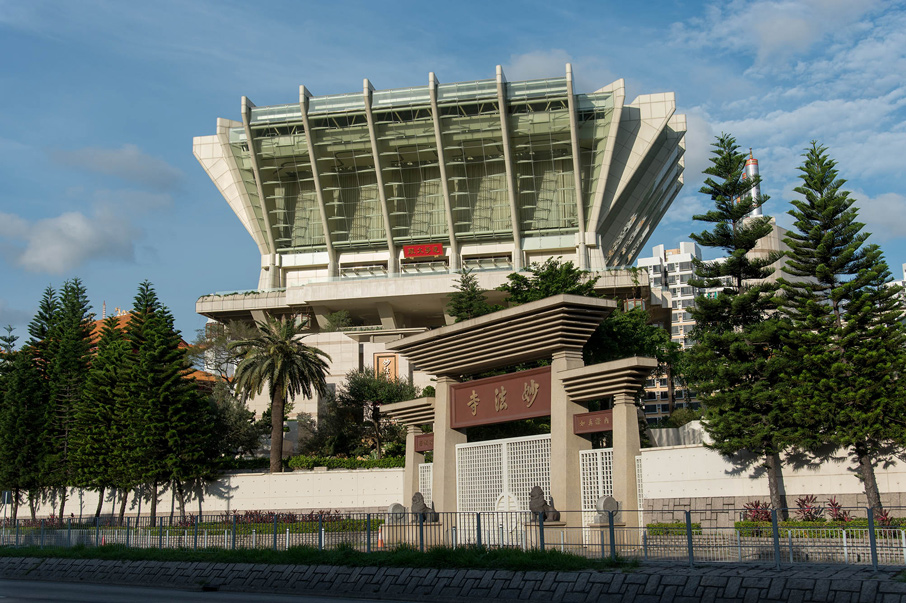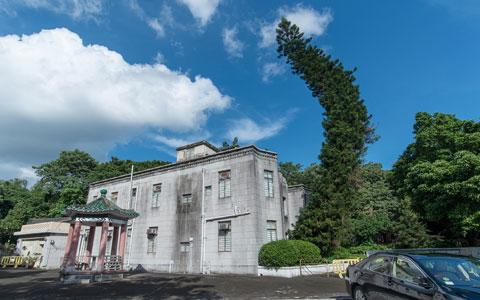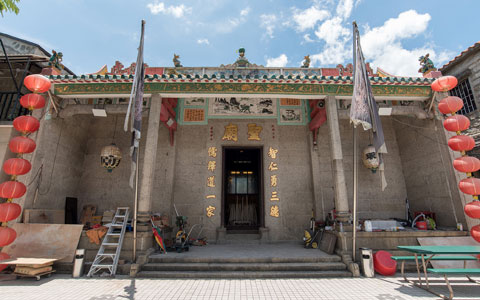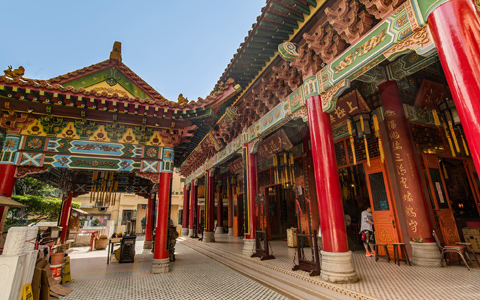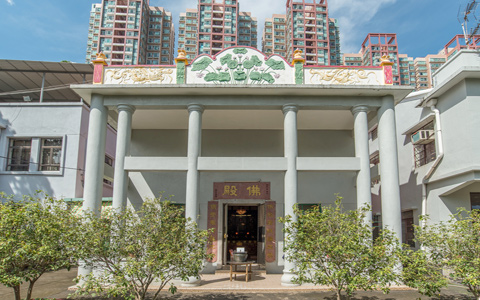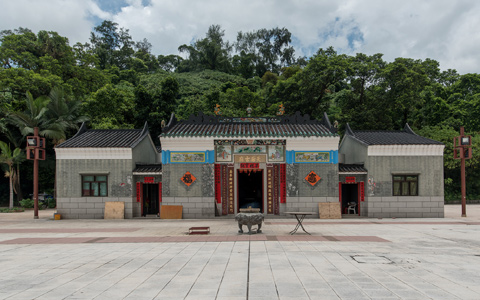Address | Lam Tei, Tuen Mun.
Year Built | 1960
Photo |Wong Wai Kit
The Miu Fat Buddhist Monastery in Tuen Mun Lam Tei was started in 1960. It was originally established in a private house. Later, a three-storey Ten Thousand Buddhas Main Hall was completed in 1980. With limited space, halls are built from the bottom level to the top. At the main entrance there is Maitreya Buddha, with the Four Heavenly Kings (Sanskrit Vajra) standing on both sides. The altar is on the second floor, and the third floor is the Main Hall (Tai Hung Po Din) dedicated to Sakyamuni Buddha, Medicine Buddha and Amitabha Buddha. The hall is surrounded by walls inlaid with Ten Thousand Buddha tiles of numerous appearances.
Subsequently, the presiding monk of the temple spent ten years to build a seven-storey complex which contains a hall, a library, a lecture hall, a general office and a parking lot. The project was completed in 2010. On the top level is the Lotus Basilica dedicated to the Buddha, two Posas and two Chonjas. The statue of Sakyamuni Buddha in the centre is made of teak wood. It is the largest indoor wood-carved Buddha statue in Hong Kong with 8 metres in height.
The design of the Lotus Basilica is unconventional. It is wider on the top and narrower at the bottom, which looks like a crystal lotus and resembles a Pilu hat worn by Buddhist Monks as well. Huge glasses are mounted on both sides and at the top of the Main Hall, letting in plenty of natural light. This practical and environmental friendly design is a good indication that the temple is keeping pace with the time.

